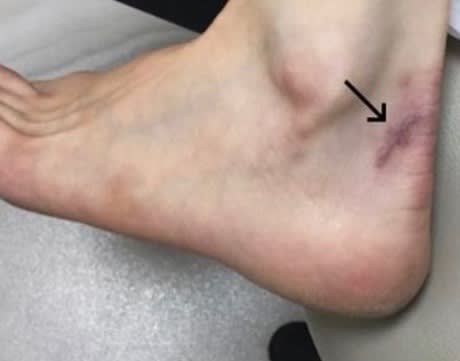
The Skinny
Overview: What are Scars?
The American Academy of Dermatology Association describes scars as the body’s way of healing damaged skin by creating new skin. Minor new scars are replaced by new skin and often need no treatment. However, deep scars tend to heal with thick tissue that can appear darker or lighter than the nearby skin.
Certain scars fade over time, while other scars do not. Scars can lay flat, appear sunken, or look raised in comparison to uninjured skin. Based on the type of scar and location, it may cause discomfort, itching, or other problems. The mere existence of the scar can be troublesome to an individual, both physically and psychologically. In those cases, scar removal can be a positive option.
AEDIT
Before & After Images by Provider












Before & After Images by Provider
Scars Solutions
The Specifics
The Main Types of Scars
From old scars to fresh ones, the amount of scar tissue that forms atop a wound dictates how the skin will appear after the healing process. Scars are generally pink or dark marks that form when the skin heals with a different texture or color, such as in the case of hyperpigmentation caused by acne scars. New collagen generates and creates newly-textured skin, like when stretch marks appear darker or lighter than the skin they have replaced.
However, there are many different treatment options for scars. From procedures using lasers, surgical excision, platelet-rich plasma facials, chemical peels, or silicone gel sheets to improve injured skin, the best scar treatments depend on the depth and size of the wound.
Here are several main types of scars:
Acne Scars - Acne can cause scars in a variety of shapes, sizes, and colors with some severe types of acne creating deep, permanent damage to the skin.
Contracture Scars - The specific type of scar left behind after a burn injury is called a contracture scar. It is named this way because burned skin tends to contract and tighten, leaving a scar that may limit movement. Contracture scars can run as deep as the nerves and muscles.
Keloids and Hypertrophic Scars - Hypertrophic scars and keloid scars look similar. They are both raised scars that are the result of an injury. However, hypertrophic scars are red scars that occur more often and do not grow as large as keloid scars. Keloids are the result of select cells overproducing and are more common among individuals of African or Asian descent.
Ideal Candidates
According to UPMC Health, ideal candidates for scar removal treatments include individuals who have waited a minimum of 12 months before deciding to treat their scars - that is, if the scars are the result of plastic surgery. That is because the body needs time to heal, and the scars may naturally fade to the point of not being as noticeable over one year.
Ideal patients for the treatment of keloids and hypertrophic scars represent those people who understand that no scar treatment will eliminate all scarring. Whether a patient receives silicone gel sheets, steroid injections, creams, surgical excision, laser therapy, or cryotherapy, the individual should hold onto realistic expectations about the outcome of the scar removal.
Not Recommended For & Contraindications
It is vital to have a dermatologist or expert plastic surgeon to examine your scars to determine the appropriate scar treatment and decide if you are an eligible candidate. PubMed reports that ideal candidates for scar treatments such as injections should be determined by the physician because if inappropriate patients receive steroid injections, it can present serious problems. Such is the case with individuals who harbor mycobacterial infections such as cutaneous tuberculosis. The infections can potentially spread into the bones or gastrointestinal mucosa if the patient receives steroid injection scar treatments.
Scar Treatment Cost
According to The Cleveland Clinic, the cost of scar treatment might be covered by certain insurance plans, if the scar is causing pain or limits mobility. Therefore, have your physician document your discomfort and write supporting referral documentation including photos that you can present to your insurance company to determine if the scar removal treatment will be paid for or considered purely cosmetic.
Scar Treatment Recovery
The healing process for scar removal is reliant upon the method used to remove the scars. Invasive methods of scar removal that excise skin surgically will require longer recovery periods than other procedures - such as merely using topical creams - but surgery can be more effective.
The side effects of scar treatments are based upon the method of scar removal being used. Rashes have been reported by customers using specific topical over-the-counter creams for acne scars.
According to PubMed, patients who harbor certain infections experienced the spread of the infections after receiving steroid injections for scars. However, other scar treatments are accompanied by lower risks and few side effects. PubMed notes that non-ablative fractional resurfacing is a scar treatment that has few reported side effects, but it may not be effective in treating certain types of scars, such as scar contracture developed from a burn injury.
Scar Treatments
Scar Revision Surgery Surgical methods of scar removal come in many forms. Surgical scar treatments can include skin grafts where skin from one part of the body is taken and used to cover the scarring. Scar revision surgery is the most invasive kind of scar removal treatment and includes the surgical removal of scars with lasers or scalpels. Plastic surgeons performing Z-plasty scar revision techniques to create a jagged appearance in an existing prominent scar to make it less noticeable.
Laser Skin Resurfacing Energy- and laser-based resurfacing devices can treat keloid scars, burn scars, and other different types of skin conditions. Studies have shown contracture scars treated with Fraxel DUAL non-ablative lasers improved skin discoloration, textures, and range of motion.
Embrace Scar Therapy Silicone gel sheeting also can help with scar management. A silicone sheet such as Embrace is directly attached to a closed and dry scar after any sutures and staples have been removed. The self-adhesive gel sheet holds the skin together, relieves tension, and reduces scarring by controlling collagen production during the healing process.
Silicone gel assists in normalizing collagen synthesis, which results in scars that are flatter and smoother. While fresh keloid or hypertrophic scars may benefit from the use of silicone gel, more studies are needed.
Over-the-Counter Creams A plastic surgeon or dermatologist may recommend over-the-counter products that help reduce the appearance of scars. Glycolic and salicylic acid help to increase cell turnover, slough off the top outer layer of skin, and fade scars. Other treatment options may include antihistamine creams for itchy scars or corticosteroids.
Meanwhile, products containing lavender oil, rosemary oil, chamomile oil, vitamin A, and vitamin E can help prevent stretch marks and reduce the appearance of scarring.
Intralesional Steroid Injections Intralesional steroid injections are often used by doctors to flatten keloids or hypertrophic scars. The injections are also used to improve the appearance of lichen simplex chronicus, were damaged and thick skin is created due to dermatitis or psoriasis. Intralesional steroid injections, or ISL, can be used in conjunction with other scar treatments.
Chemical Peels and Dermabrasion Additional scar treatments include chemical peels or dermabrasion, which are both methods of exfoliating top layers of skin to reveal smoother layers of skin beneath. A dermatologist uses chemical solutions on the healed scar, helping to slough away damaged skin. Chemical peels are most effective for scars on the surface of the epidermis and after multiple treatments. In the same manner, dermabrasion involves using a handheld device to sand or smooth away raised scars.
The Takeaway
Conclusion: Know Your Scars, Find the Best Scar Treatments
When seeking scar treatment, it is best to garner medical advice from a dermatologic expert or board-certified plastic surgeon who has in-depth experience in treating different types of scars. Acne scars will receive different medical care than keloid scars, so visit a knowledgeable doctor's office to discover if your specific scar would benefit best from laser treatment, surgical removal, topical solutions, or a combination of several different treatments.
Taking the time to select the best plastic surgeon for your medical needs will give you a headstart in finding optimal scar treatments for your specific injury.

